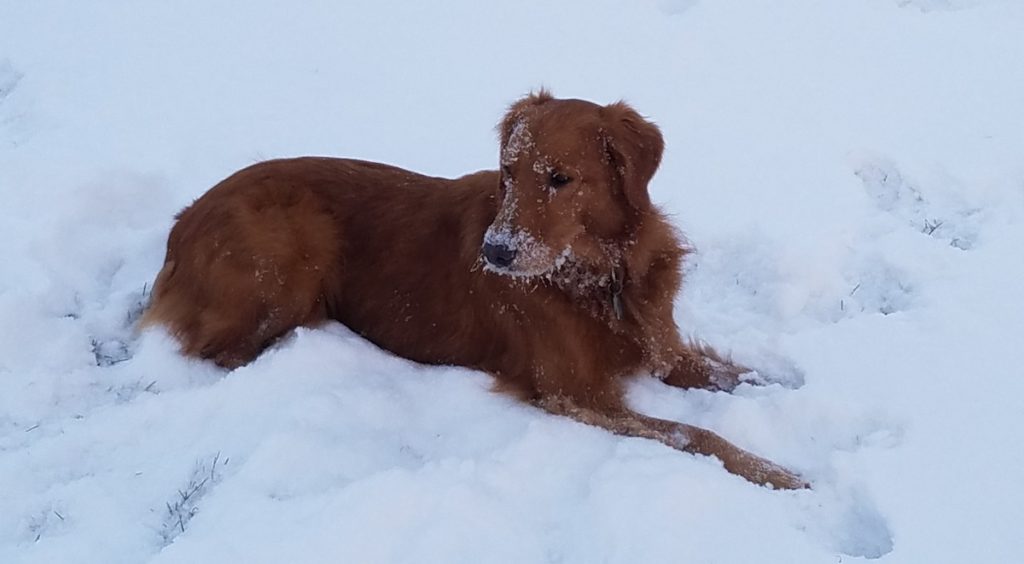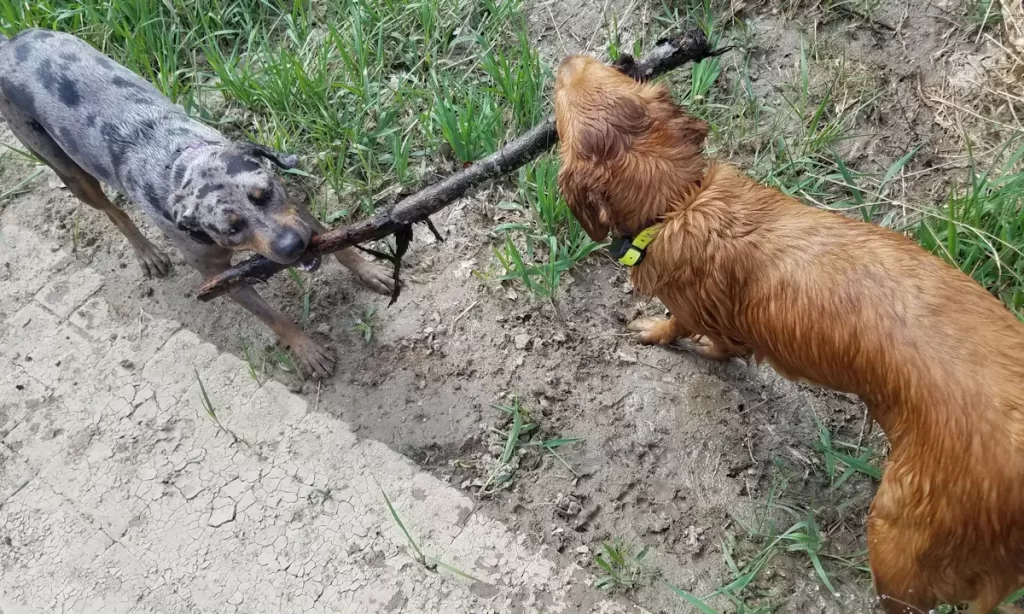All dogs shed. Different breeds, indeed, individual dogs are all different. That means you need to use different methods to alleviate the problem. You may not need all of these 11 Easy Fundamentals to Stop Your Dog Shedding, but one or more of these methods will work for you.
I recommend that you try them all and see what is best for you and your pup. Your own experience is usually the best teacher. My Golden sheds, but not as much as many shorter haired dogs such as Labs and Huskies.
The Catahoula Leopard Dog above shed moderately all year long. Usually a weekly brushing will take care of it. The Golden Retriever sheds moderately all year and more in spring and fall. Goldens are notorious for shedding but though the three I’ve had do shed, they’re not nearly as bad as lots of other breeds. Their undercoat will drop off in the spring for summer and replace itself in the fall.
One: Feed your dog a healthy diet
You need to follow this first step anyway. When your dog is getting good nutrition, their hair follicles become hardier. Hardy hair follicles will help to minimize the shedding that is caused by undernourished hair folicles.
Two: Give your pupper plenty of water
Hydration is very important to your dog’s overall health including lowering the amount of shedding. Again, this needs to be done for all dogs. Make sure your pooch always has fresh water. It will also keep their skin hydrated. Dehydrated skin can increase shedding and additional hair loss.
Three: Bathe your dog regularly
A bath will not only keep your dog clean, it also helps remove excess and dead hair before it falls. A good deshedding shampoo can help ease the shedding problem even more.
Four: Be sure to discuss this with your vet during yearly wellness visits
You will find that your vet will be very helpful with much of this. Things like supplements, allergy control, flea and tick control, and any skin condition you find over the year should be looked into.
Five: Brush your pup frequently
Brushing not only gets rid of dead hair, it’s an excellent way to bond with your pooch. You will be able to see problem areas in his skin , and deal with them before it get bad.
Six: Give your dog supplements such as Omega 3 Fatty Acids
There are many recommended Omega 3 supplements available. I’ve linked to one that I use. It’s inexpensive and comes highly recommended.
Seven: Use a shedding tool

If your dog has an undercoat, you will need a shedding tool to remove the dead undercoat hair. My Golden Retriever loves winter. Her undercoat keeps her warm even in the most frigid conditions.
This is another opportunity to bond with your pupper.
Eight: Use a hair blower after the bath
After your dog’s bath, using a blower hair dryer and giving him a good brushing will do wonders to limit shedding and improve your bond. Some dogs don’t like this but if you keep trying, and stay sensitive to your dog’s behavior you can usually make it work. Dogs are like people. They sometimes need a push to try new things.
Nine: Control Fleas and Ticks
You’ll need to get with your vet for recommendations here. I have been using Nexgard for flea and tick prevention. I used Frontline topical with my other dogs but Nola likes to swim too much for a topical to work reliably.
Ten: Make Sure Your Dog Is Getting Enough Exercise
Regular exercise won’t stop your dog’s shedding problem, but a healthy, well exercised dog will develop healthier skin and hair. Adequate exercise will also help reduce stress in dogs, and that has been linked to higher levels of shedding. I walk my dog miles each day. It helps me lose weight as well as keeping my pup fit. Once you get into a habit of walking your dog, your dog will help you stay with it.
Eleven: Check for allergies
If your dog has allergies, that could be the cause of excess shedding. Talk to your vet about this. I’ve had dogs that were allergic to many things, even grass. If you can find the cause you can nip it in the bud.
These easy fundamentals to stop your dog shedding
They are not perfect but they can help the problem greatly. A great resource for more information is at pets.webmd.com.

